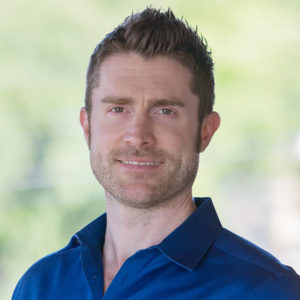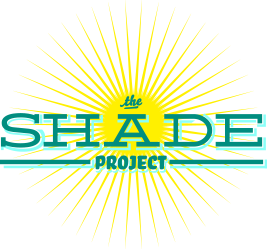 About two and a half years ago at the age of thirty-six, I had a little red spot above my lip that would come and go that I found, well, annoying. My mother (as mothers do) suggested a trip to the doctor/dermatologist. Going to a “derm” for a skin check is a painless thing, and the one I was going to go to was a particularly shiny, pleasant office – Snyder Dermatology here in Austin – so I had no qualms with going in to see what cream or different soap I needed to use for this little red spot that was, again, a little annoying.
About two and a half years ago at the age of thirty-six, I had a little red spot above my lip that would come and go that I found, well, annoying. My mother (as mothers do) suggested a trip to the doctor/dermatologist. Going to a “derm” for a skin check is a painless thing, and the one I was going to go to was a particularly shiny, pleasant office – Snyder Dermatology here in Austin – so I had no qualms with going in to see what cream or different soap I needed to use for this little red spot that was, again, a little annoying.
Dr. Snyder took a look at my lip and told me it was basically (and semi-comically) dandruff from when I left a little bit of a beard/shadow on my face. Problem solved—just use a dandruff shampoo—yes, above my lip—a bit goofy, but easy enough.
Flesh eating bacteria or nasty rash was out so I comfortably laid down for a skin check on the rest of my body without much worry. This is a totally painless, and surprisingly quick process. A skilled doctor knows what to look for. Dr. Snyder started on my back and after a short while got to my upper shoulders, paused and looked closer at a couple areas. “You have a few basal cell spots.” I thought, well, okay, do I use head and shoulders on those too? I then naively asked “what are those?” She calmly replied “skin cancer.”
At this point a definite sinking feeling hit my stomach. Although, I had a general sense that “melanoma is the bad one” I really didn’t know what this meant for me. After finishing my skin check and finding a couple spots that were likely Actinic Keratosis “pre-cancers” (or “AKs”), I sat up and got the briefing on what I was dealing with. The AKs were quickly frozen with short blasts of liquid nitrogen and would most likely not return. The basal cell spots had to be cut on the surface to take samples for biopsies to determine if they were for certain basal cell carcinomas. Dr. Snyder, however, said they were “pretty classic looking” and felt confident they were. Indeed, a day or two later the lab confirmed that to be the case.
I learned that Basal Cell Carcinoma is a slow growing type of skin cancer that would be extremely unlikely to spread and cause me further trouble. However, I would need to have them surgically removed, and perhaps the most worrisome news to me was that no matter how much I protected myself going forward in life, it was likely more would show up—and that I would need to get a skin check from a dermatologist perhaps two to four times a year, likely for the rest of my life. I have since had a basal cell spot on my temple, arm, and currently I am scheduled to have one (possibly two) removed on my upper chest. I have also had several more AKs and did a rather unpleasant two-week treatment of topical chemotherapy on my face using a cream called 5-fluorouracil or “5-FU” to help prevent further AKs and lower the likelihood (but not eliminate) other skin cancers on my face.
I always thought I was “pretty good” about sunscreen and not getting “too much sun, too often,” but I will admit that in my twenties and the earlier years of my thirties I did sometimes like “having a little color” because I thought it “looked a little better.”
I spent some limited time in tanning beds in my twenties, several years driving around in a convertible in Los Angeles, occasional time on beaches or at parks, and many hours bass fishing on lakes here in Texas, and even being “pretty good” about sunscreen and sun protection through it, I did more damage that my very fair skin could handle.
The lifestyle change is something I am still getting used to. No more quick trips to the dog park on a sunny day without getting totally sun-protected with sunscreen (and usually an SPF long sleeve shirt with hood) first. When I go fishing, even in triple degree heat, I always have nearly all of my skin covered with SPF clothing – from long pants, to a long sleeve shirt, to gloves, to a wide brimmed hat, and a “buff” covering most of my face. When I meet a friend for lunch, eating on a sunny patio is something I always avoid. I have had all of my car’s windows tinted with a high-end protective film, including the windshield (don’t worry, that film is clear!). These are just some of the ways in which my skin cancer has affected my life.
There is also the worry of where the next spot will show up, how easily it will be removed, how it will scar, how many I will get, and so on. Again, however, I am one of the lucky ones with basal cell as one person dies every hour from Melanoma.
I am so happy to be a part of The Shade Project and be able to help an organization that is fighting what by most measurements is the most common and the most preventable cancer. When you donate, volunteer, or support The Shade Project, you are quite possibly saving a life, saving someone from medical costs and procedures that were avoidable with proper knowledge and prevention, and helping stop the disruption in life that skin cancer can cause.
I see big things for this organization in the future, and hope for little things for the future of skin cancer! Wear your sunscreen with pride, and please get your skin checked!

